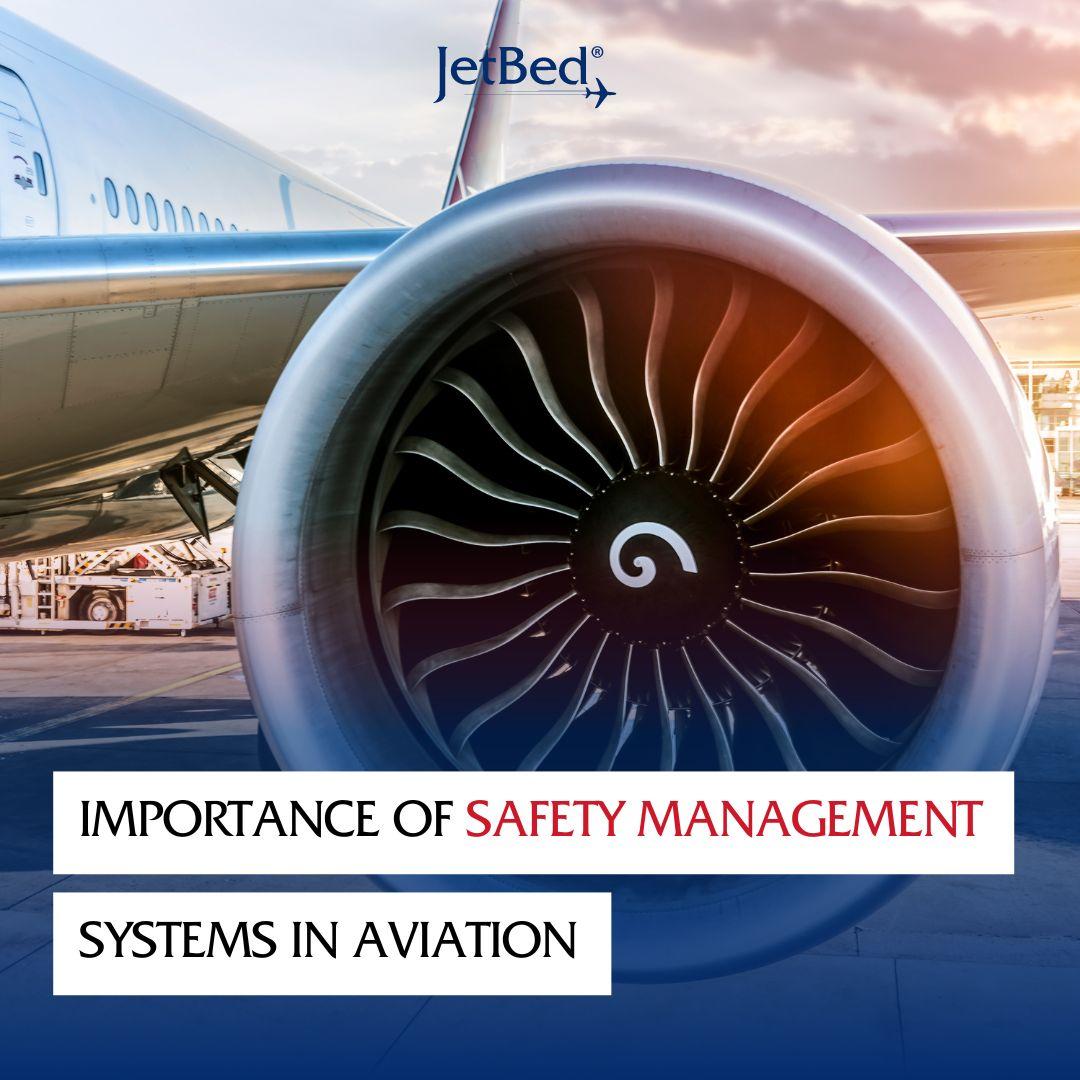Flying is one of the most popular and efficient modes of transportation today. Still, it comes with a certain level of safety risks. Airplanes operate in a highly dynamic environment and any mistake or negligence can result in catastrophic consequences. This is why the aviation industry is heavily regulated when it comes to safety.
Adherence to safety standards and regulation is a top priority for airlines. As well as aircraft manufacturers, aircraft leasing companies, and aviation authorities around the world. This is why they invest heavily in safety systems which are designed to mitigate and manage risks associated with air travel.
Safety Management System (SMS) is a wide approach to managing safety risks in the aviation industry. This system encompasses a wide range of activities that aim to enhance safety and risk. Including hazard identification and risk management, safety performance monitoring measurement, and audits and reviews. SMS is a proactive approach to safety based on a process of identifying and assessing risks, implementing mitigation strategies, and monitoring and adjusting these strategies so they remain effective.
The aviation industry has made significant strides in improving safety over the past few years. With the help of SMS and other safety management approaches, the risk of accidents and incidents has been reduced to historically low levels. However, there is always room for improvement. The industry continues to invest in new technologies and innovative safety management strategies to make air travel even safer.
Aviation safety has been a top priority for the industry since its inception. Over the years, many aviation safety management systems have been put in place to ensure the safety of all passengers and crew members. With this in mind, this article will be focusing on the importance of following aviation safety management systems.

Importance of Safety Management Systems in Aviation
The aviation industry is one of the most complex and demanding sectors in terms of safety, given the risks associated with human lives, the environment, and the economy. Safety Management Systems (SMS) have emerged as a crucial tool to manage those risks and ensure continuous improvement of safety performance.
Here are some reasons why SMS in aviation is essential:

Prevention of accidents or incidents.
The primary goal of SMS is to identify and mitigate safety risks before they escalate into major issues. By analyzing data, conducting safety audits and inspections, and implementing risk controls, SMS can improve safety across the entire organization, reducing the chances of accidents and incidents.
Prevention of accidents in an airplane is the responsibility of the entire flight crew irrespective of how many pilots fly a plane. SMS involves the integration of safety protocols across all levels of operation to ensure the risks of accidents and incidents are mitigated. It gives a systematic approach to managing safety risks that can lead to accidents in-flight.
Proactive safety.
SMS focuses on proactive safety management rather than reactive safety management. That is, SMS seeks to predict potential safety issues before they occur by monitoring possible safety hazards and taking actions to avoid them. This approach helps organizations enhance safety culture and continuously improve safety performance. Pilots, staff, maintenance crew, and every employee in the aviation industry are required to follow the aviation safety management system religiously.
Aviation management systems have been developed to create a robust framework for ensuring that flights operate. This includes the establishment of risk assessments, safety reporting, and continuous monitoring of operational practices. The importance of following these systems towards ensuring safety cannot be overstated. A single person failing to adhere to the protocols can prove to be catastrophic. The smallest of errors or omissions can cause a ripple effect that can put the safety of the entire flight and its passengers in jeopardy.
Cost savings.
Accident or incident investigations and the remedial actions that follow are very costly for aviation. Despite the common insurance for airline companies, safety issues can accrue different indirect costs which are often not covered or fully reimbursed. Some of these indirect costs include legal fees and damage claims, medical costs not covered by worker’s compensation, and loss of income. As well as increased insurance premiums, fines, aircraft recovery and clean-up, and time lost by injured persons.
Proper implementation and maintenance of SMS can help to save airline operators from these costs. SMS reduces costs by identifying safety risks and preventing potential safety incidents that could naturally result in expensive investigations and reputation damage. It can also help to get a reduction in insurance premiums following a demonstration of control of safety risks. This helps full jet owners and fractional jet owners reduce management and maintenance costs.
Compliance with the regulation of aviation authorities.
Aviation authorities around the world mandate SMS as a requirement for organizations that operate in aviation. The International Civil Aviation Organization (ICAO) Standards and Recommended Practices (SARPS) specifies that an SMS requirement must be incorporated into national safety regulations for operators of non-commercial aircraft over 12,500 pounds maximum takeoff weight or turbojet-powered aircraft.
SMS regulations aim to provide a systematic, proactive, and data-driven approach to safety management and to integrate this into every aspect of an operator’s activities. This has been identified by ICAO’s 189 member states as being paramount and has allowed for a better interface with regulatory authorities on safety issues. It helps member states and their operators institute a corporate safety culture that promotes efficiency and effectiveness.
Reputation and stakeholder trust.
Aviation organizations that commit to the safety of their stakeholders, including passengers, employees, regulators, and investors are likely to experience more trust and support. A good safety record can increase customer loyalty, employee engagement, regulatory compliance, and confidence. The customers will be aware of the safety operations and more willing to use the aviation service repeatedly based on its reputation for prioritizing safety.
Proper safety management also includes good work-life balance practices for members of staff and flight crew. Simple administrative interventions like adjusting rosters to eliminate tiring work schedules go a long way to improve the morale of the operators and service crew while also promoting safety benefits. Thereby reducing staff turnover and reducing possible training costs, as well as improving quality management and business processes overall.

Aviation Safety Management System Examples
- Safety Policy and Objectives
- Management Commitment
- Safety Accountability and Responsibilities
- Appointment of Key Safety Personnel
- Coordination of Emergency Response Planning
- Safety Management System Documentation
- Safety Risk Management
- Hazard Identification
- Safety Risk Assessment and Mitigation
- Safety Assurance
- Safety Performance Monitoring and Measurement
- The Management of Change
- Continuous Improvement of SMS
- Safety Promotion
- Training and Education
- Safety Communication
Safety Management Systems are a must-have for a safe trip.
Safety Management Systems in aviation are crucial in ensuring compliance with regulations. As well as preventing accidents, proactive safety management, cost savings, and maintaining reputation and stakeholder trust. SMS can ultimately lead to a safer, more efficient, and more profitable operation.
We should not underestimate the importance of following aviation safety management systems. With all the precautions in place, adhering to these protocols creates a safe and secure environment for everyone involved. It ensures that air remains one of the safest modes of transport. And, that passengers reach their destinations without any harm.
With safety assured with SMS, you can settle into your JetBed stress-free. Your jet seats can be as comfortable as your king-size bed at home making in-air sleeping as relaxing as possible. With different options depending on the aircraft in mind, JetBed is a must-have for a blissful rest.

